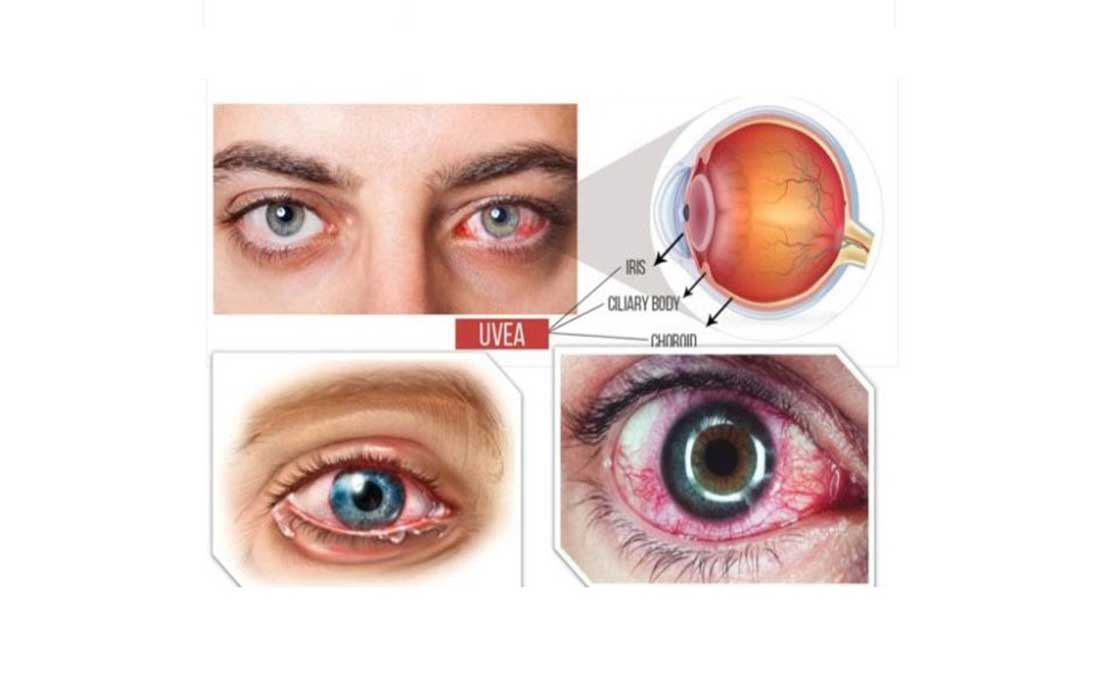
Does Rilassáre's alternative medicine replace traditional medicine?
No, alternative medicine is a complement to the treatments that the patient may be taking and is not contraindicated in any case due to its safety and lack of adverse reactions or side effects. Alternative medicine helps strengthen your immune system and regulates your body’s acidity for optimal functioning.
What is uveitis?
Uveitis is the inflammation of the middle layer of the eye, located between the sclera on the outside and the retina on the inside. It affects the iris, ciliary body, pars plana, and/or choroid. Sometimes, it may also extend to the retina.
Symptoms of uveitis
The general symptoms of uveitis are eye pain and redness, and vision loss to varying degrees. These may differ depending on the affected area of the uvea: anterior, intermediate, posterior, and panuveitis.
Causes of uveitis
Uveitis can be caused by autoimmune disorders such as rheumatoid arthritis or ankylosing spondylitis, infections, or exposure to toxins. However, in many cases, the cause is unknown.
Types of uveitis
There are many different forms of uveitis, including:
- • Anterior uveitis. Occurs in the front part of the eye in otherwise healthy individuals and may affect only one eye. However, some cases are related to rheumatologic, skin, gastrointestinal, lung, and infectious diseases.
- • Intermediate uveitis. Commonly occurs in young adults. The center of inflammation often appears in the vitreous. It is associated with several disorders such as sarcoidosis and multiple sclerosis.
- • Posterior uveitis. This is the least common form of uveitis. It mainly affects the back part of the eye, often involving the retina and choroid.
- • Panuveitis. This occurs when all three main parts of the eye are affected by inflammation. Behçet’s disease is one of the most well-known forms of panuveitis and severely damages the retina. These three types are the most severe and highly recurrent. They often cause blindness if not treated.
Diagnosis of uveitis
The clinical history and ophthalmological examination will describe and classify the uveitis into twelve clinical patterns, with measures of activity and remission. Each of these clinical patterns is more frequently associated with certain diseases.
It is very important to establish a firm diagnosis because it avoids a long search for diagnoses or treatments, reduces the anxiety caused by not knowing the reason for the discomfort, and helps set realistic goals.
Treatment for uveitis
Treatment depends on the severity of the condition. The most common treatment is the use of eye drops to relieve inflammation. If uveitis results from an infection, antibiotics or antivirals may be necessary.
Risk factors
Possible causes of uveitis include infection, injury, or an autoimmune or inflammatory disease. In many cases, the cause cannot be identified. Uveitis can be serious and may lead to permanent vision loss.
Complications of uveitis
Inflammation of the uvea can affect the cornea, retina, sclera, and other vital parts of the eye. This inflammation, known as uveitis, can irreversibly affect vision and cause blindness.
Prevention of uveitis
To prevent infectious uveitis, it is important to maintain a healthy diet, thoroughly wash fruits and vegetables with water and soap before eating them, and ensure that meat is properly cooked.
Online Doctor
If you would like an online consultation with one of our doctors, click the button below to visit our website www.virtualmedical.com.mx
Visit Site